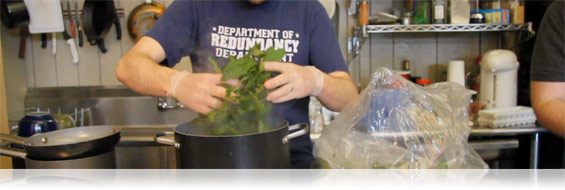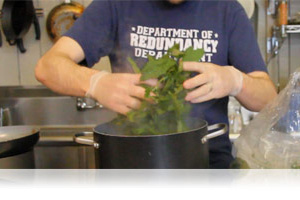Nettle Blanching
While you have to briefly blanch stinging nettles before eating them in order to remove their sting, you’re not washing their acid into the blanching water. Instead you’ve actually disarming it completely. After the blanch both the nettle leaves and the blanching water are completely safe to consume. Not only that, but the blanching liquid has absorbed flavor, color and nutrients from the nettles themselves….it’d be a shame to waste it!
The water will get stronger (and darker) after each batch of nettles you blanch in it. We’re considering a small stock pot full of boiling water with enough nettles stuffed into it as will reasonably fit a batch.
Here’s our rough strength scale to help you use it.

DIRECTIONS
- After 1st Batch
- After 2nd Batch
- After 3rd Batch
Nettle blanching water can be frozen for long term storage as you would other stocks & broths, and is another way to stock your kitchen with nettle goodness beyond fresh nettle season.


